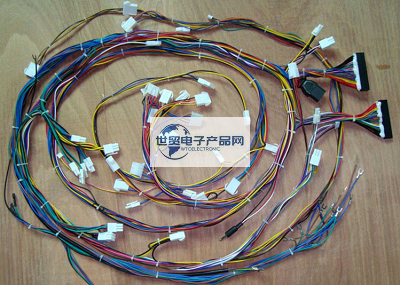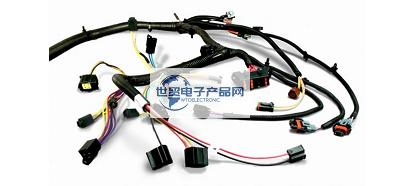Categorization:Product Information
Electronic wire harness processing can be used in different fields and can also be used in different types. Common ones include automotive wiring harness processing, electronic wiring harness processing, terminal wiring harness processing and so on. The following points should be paid attention to during electronic wire harness processing: 1. Appearance inspection of electronic wire harness processing 1) The tension is moderate but not too loose or too tight; 2) There is no ash sticking phenomenon on the surface of the copper wire after rolling; 3) The cable is laid well and evenly, with no stacked edges or underedges (high edge and low edge or high edge and low edge), and no stranded wires; 4) The surface is smooth, free of black lines, messy lines, pitting, oxidation, scratches, poor tin plating (tin sticking, tin leakage), diagonal lines, hand seams, and fingerprints;

-------------------------------------------------------------------------------------------------
2. Electronic wire harness processing wire diameter inspection 1) First debug the micrometer to zero; 2) Put the copper wire to be inspected outside the clamp wire of the micrometer, and twist the end of the micrometer with appropriate force (not too heavy or too light); 3) After hearing the micrometer sound three times, observe the reading of the micrometer; 4) Repeatedly check the same reading at the same position two or three times, but it cannot be detected each time, so it must be checked in sections; 5) Check the different interfaces of copper wires with a wire diameter of more than 0.2 cm to avoid flat wires; 3. Electronic wire harness processing elongation inspection 1) Turn on the switch of the extensometer; 2) Observe whether the left clamp is in its original position and whether the reading displayed by the instrument is zero. If the left sensor clip is not in its original position and the reading displayed by the instrument is not zero, press the restore key and the zero key immediately; 3) gently open the wire clamp, put one end of the copper wire to be inspected into the induction wire clamp, press the induction wire clamp, then gently straighten the copper wire, put the other end into another induction wire clamp, press the induction wire clamp to clamp the copper wire firmly, and press the key; 4) When the induction clamp breaks the copper wire and stops moving, observe its display reading as the elongation of the measured copper wire; 4. Electronic wiring harness processing resistivity check 1) Turn on the power switch of the resistivity meter; 2) Clamp the induction clips on both sides and observe whether the reading is zero; 3) If the instrument displays a reading of 0, take a 1m-long copper wire to be inspected, and use two induction devices to clamp both ends of the copper wire respectively. The tested copper wire shall not come into contact with any metal object, and press the key; 4) Check the displayed reading and take the reading to calculate the resistivity; The above are some process precautions for electronic wiring harness processing, I hope it will be helpful to you!

---------------------------------------------------------------------------------------------------------------------------------------------------------------------------------------------------------------------------------------------------------------------------------------------------------- If you have related [connector wiring harness and cable production] purchasing/purchasing needs or want to purchase/understand which connector wiring harness and cable product solutions we can provide, please contact our business staff below; If you have related sales/resources and promotion needs of [Connector Wiring Harness and Cable Production], please click "→ Business Cooperation ←" to negotiate with a dedicated person!